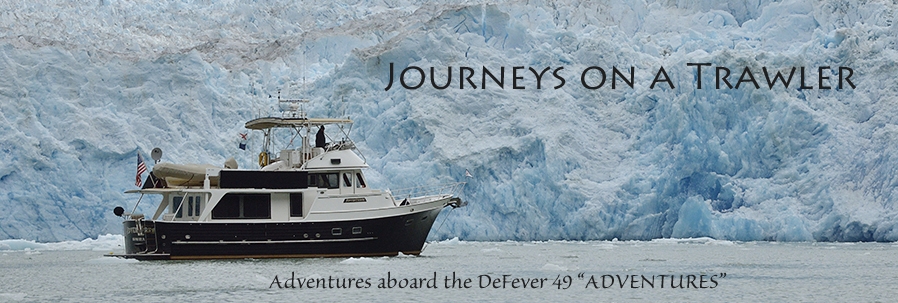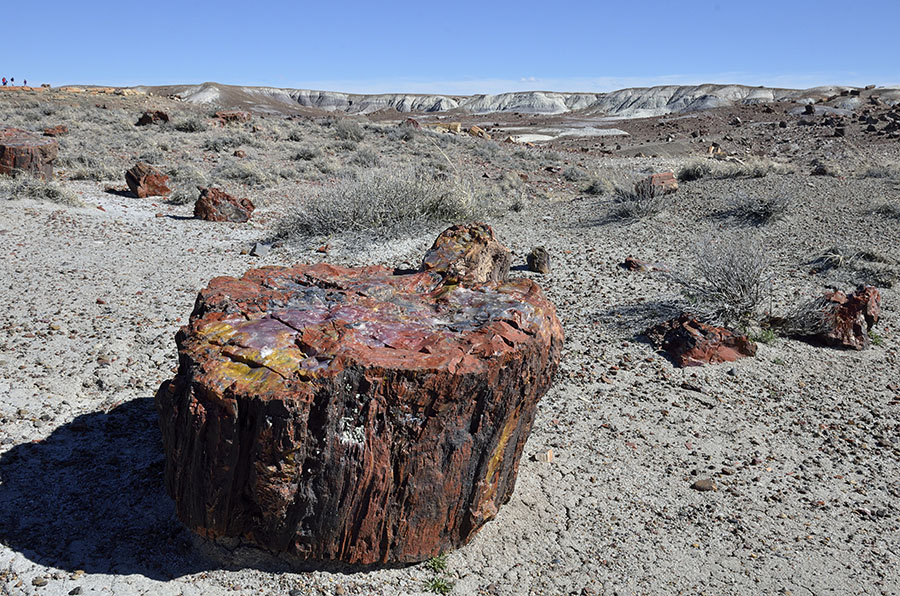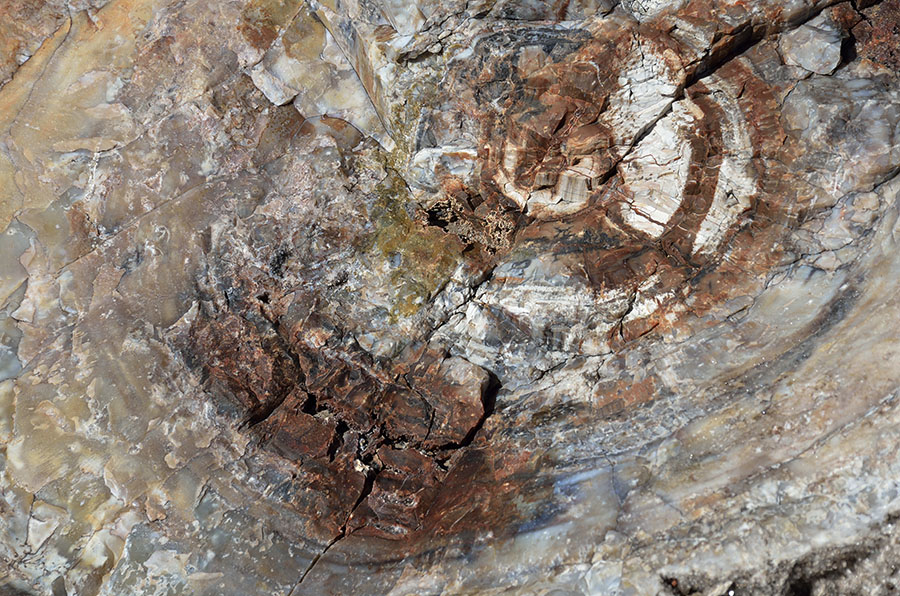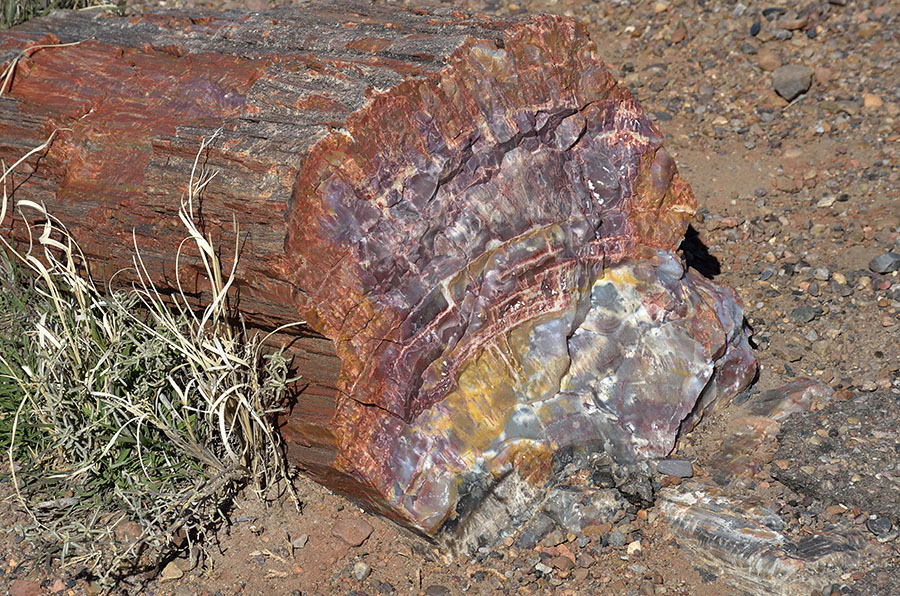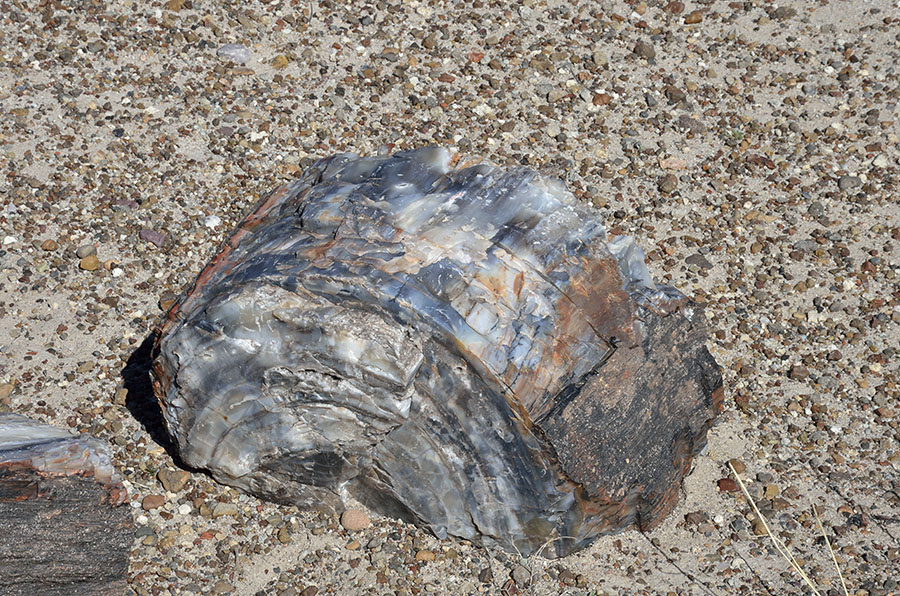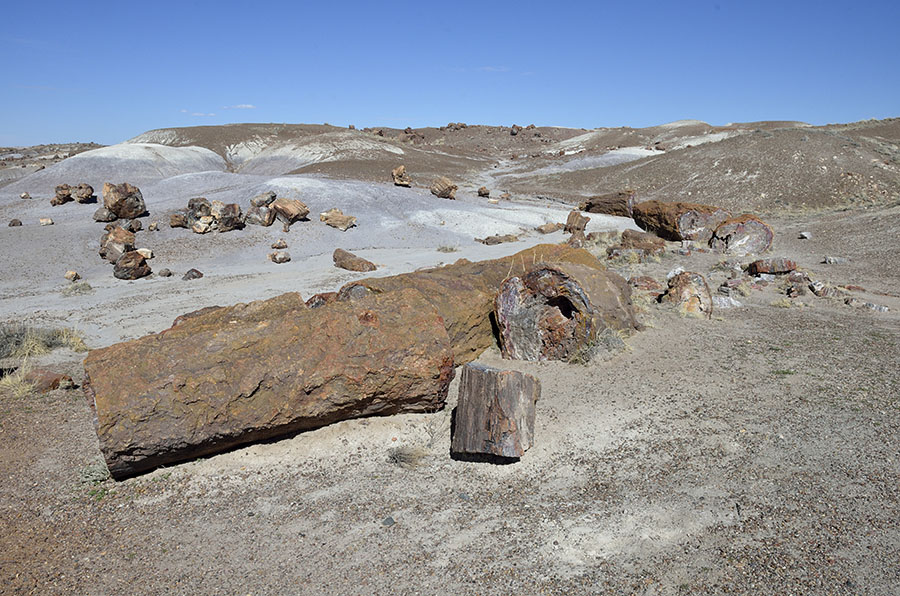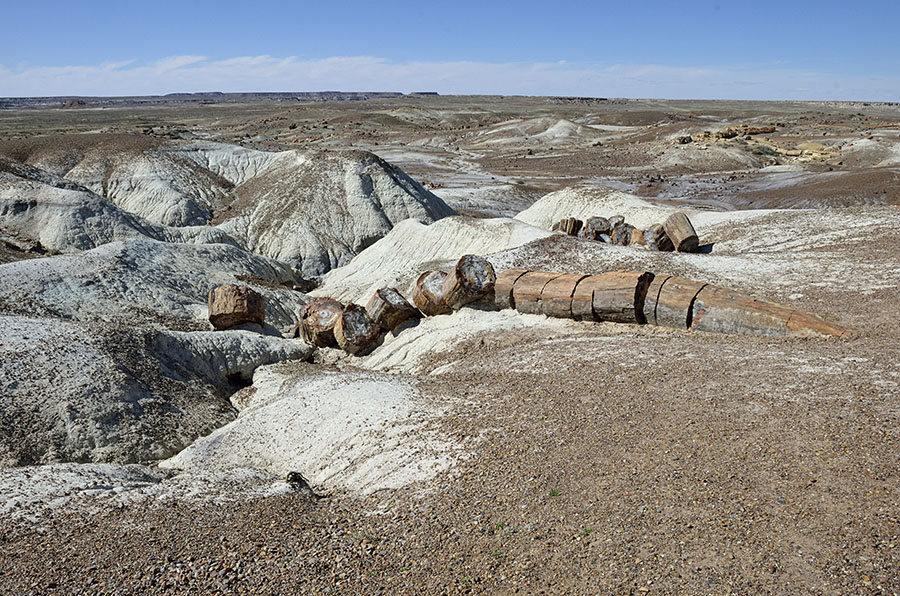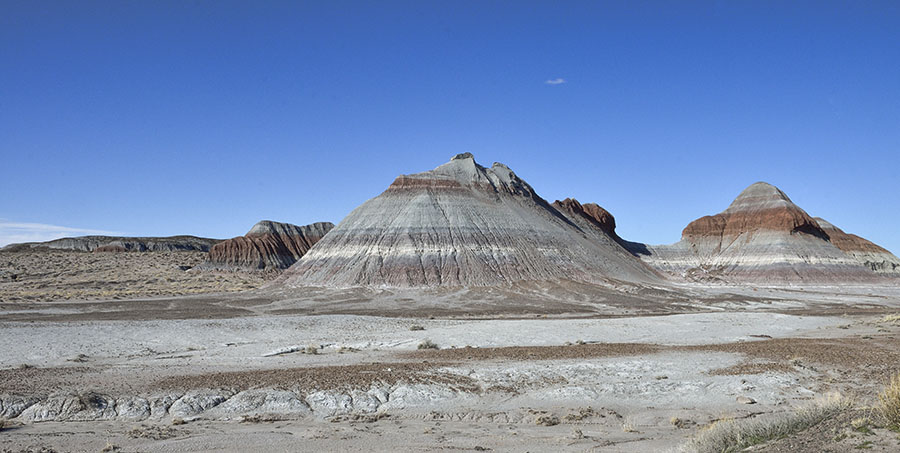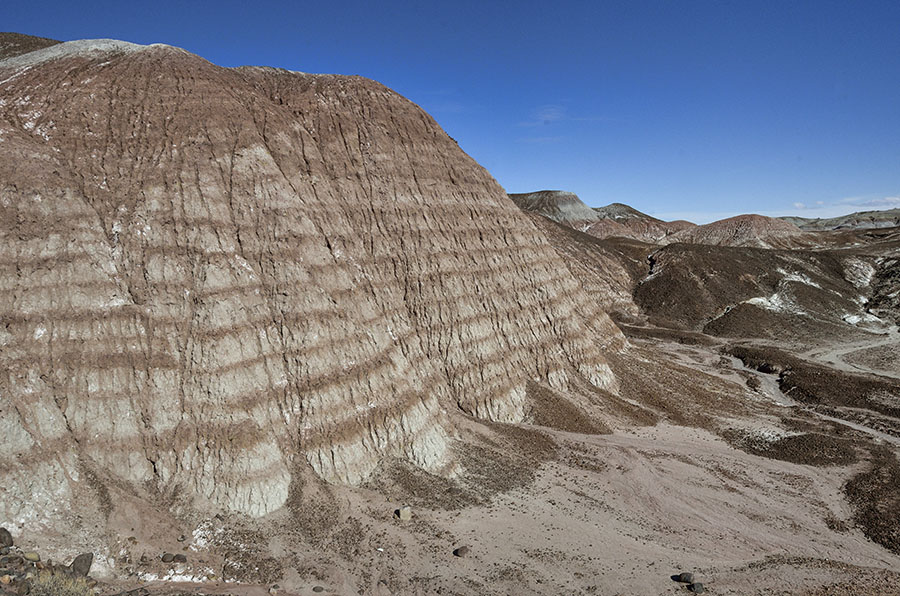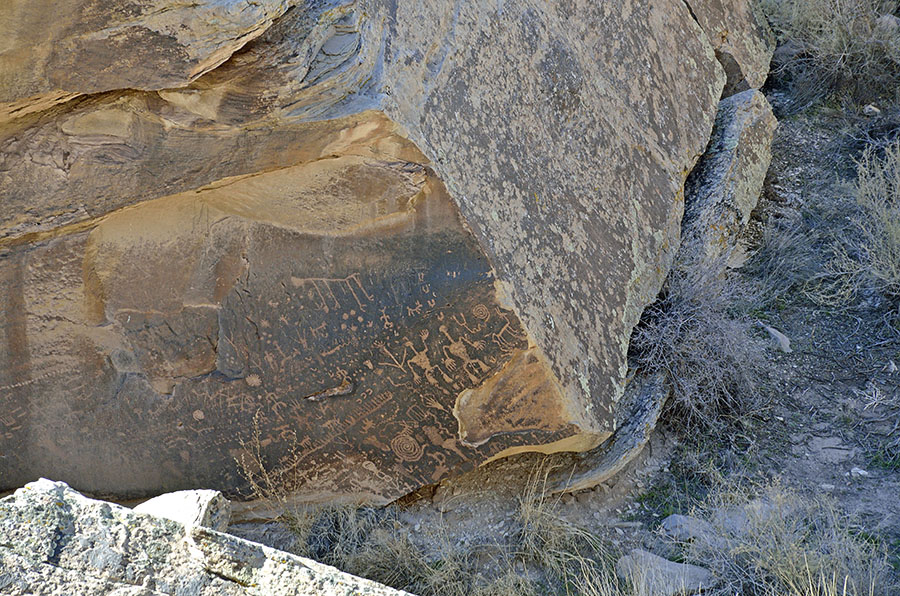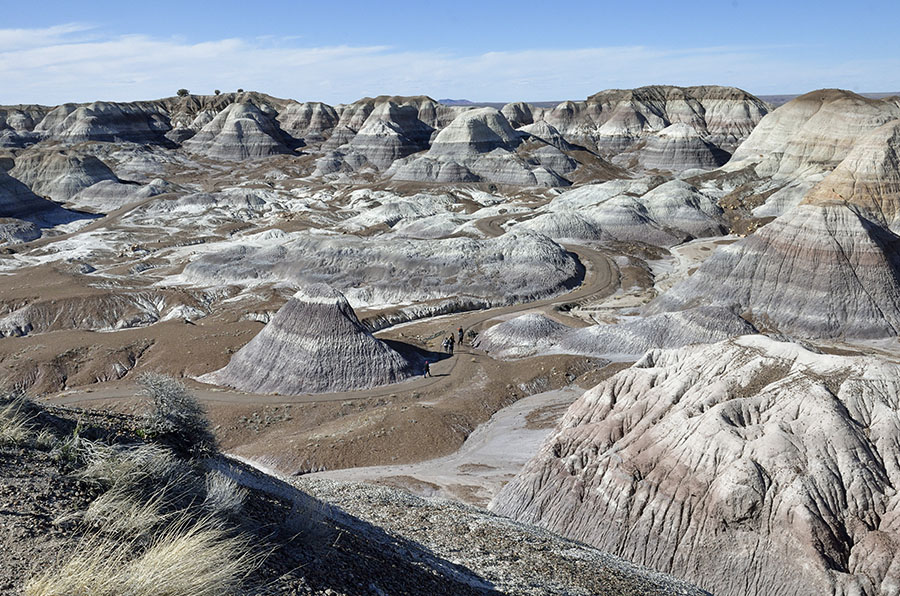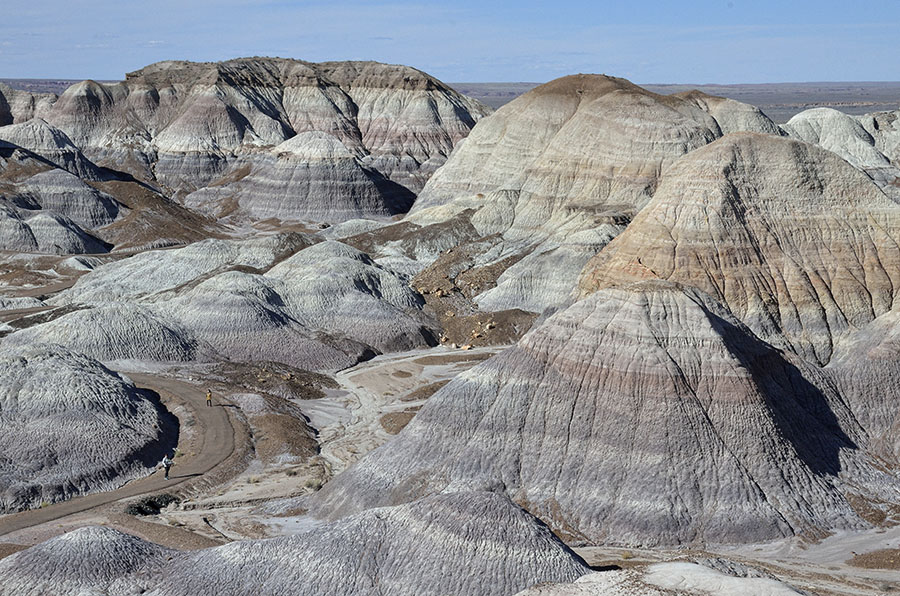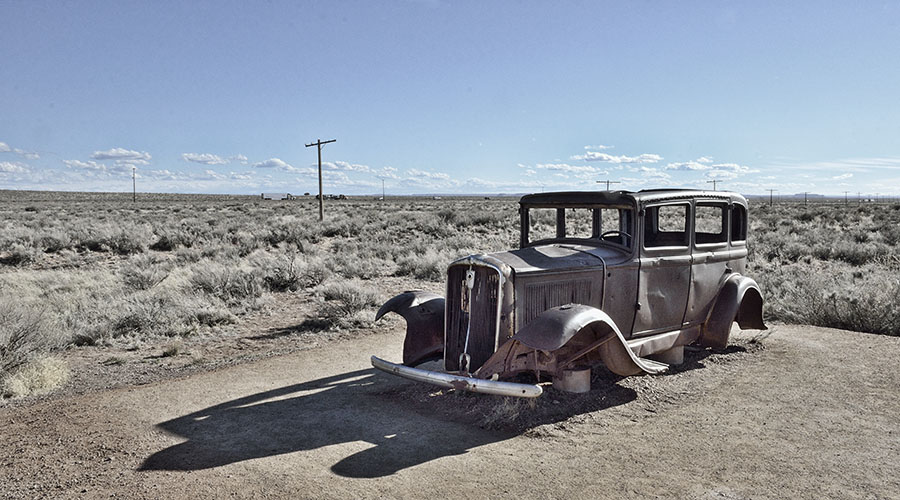We managed to pack a few more adventures into the last of our road trip, starting with the state park where we camped near Petrified Forest. Homolovi State Park was established to protect Hopi ancestral burial and archaeological sites from vandalism, destruction and theft. Prior to becoming a protected area, artifact hunters actually brought a backhoe into this area to dig for illegal treasures. Horrible! At least this area is now more secure, though many other native ancestral sites continue to be violated.
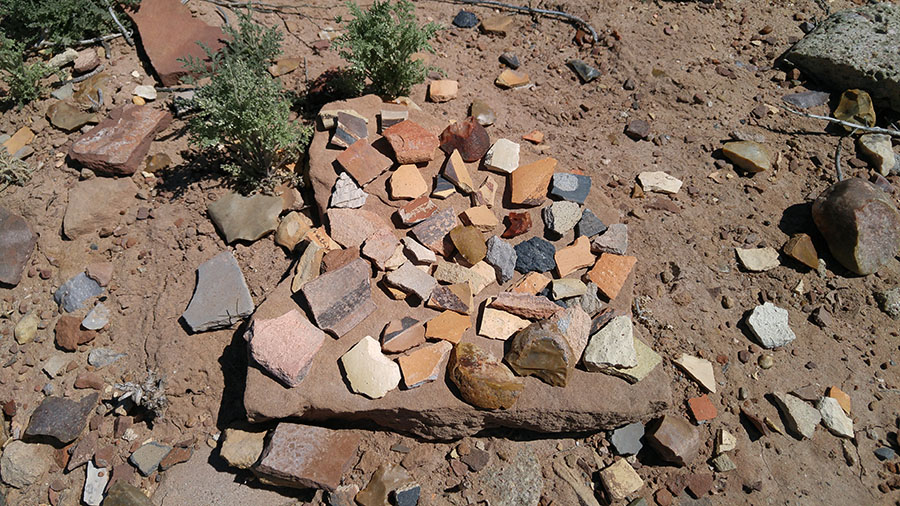
Visitors can not remove anything from these sites, but they are allowed to place pot shards in groupings like these to make it easier for others to see.
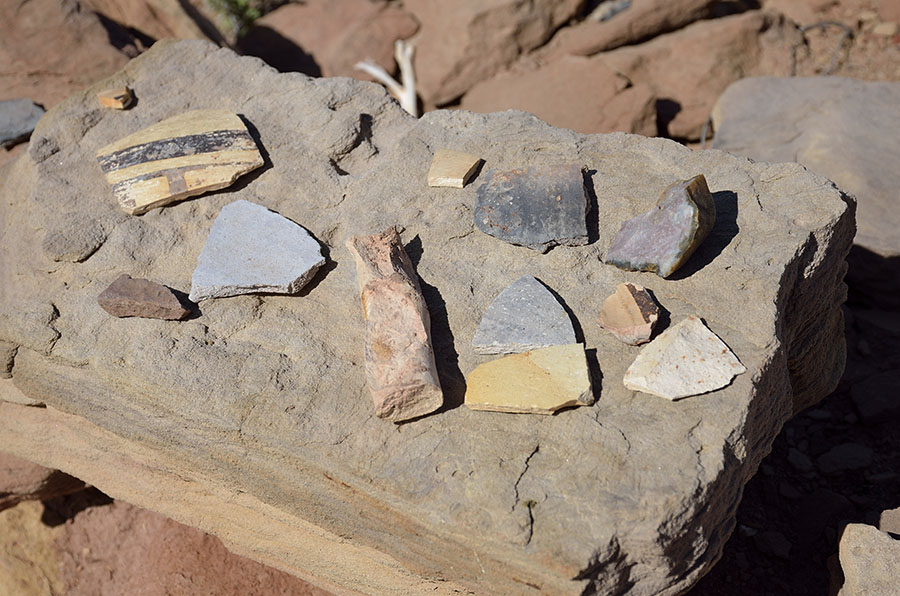
The native people who lived here did so from 620-1400 AD, coming and going as the nearby river periodically flooded.
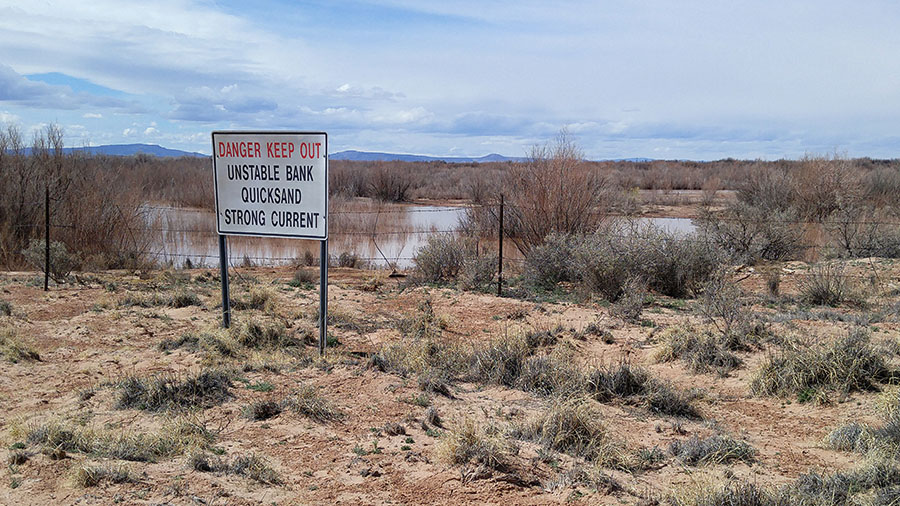
Homolovi isn’t a very big place in terms of archaeological sites to see, but it was interesting to see the culture and history, and learn about the shocking extent of theft.
Now it was time to start heading back west, so we checked out the area around Lake Havasu at the Arizona-California border for a little while. The hiking trail we chose was just okay – through a series of dry washes that gradually became dry waterfalls eventually blocked by high water. Once the scrambling and climbing got too vertical, I voted to turn back!
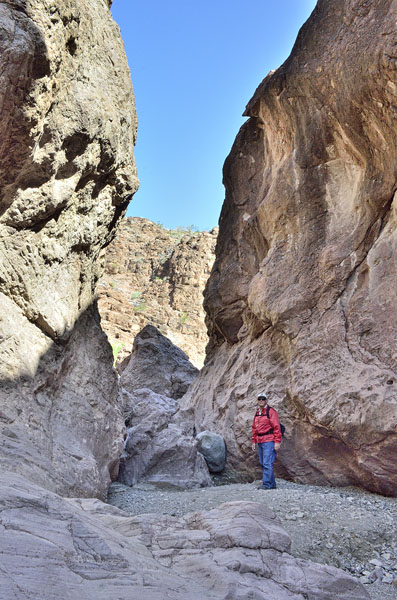
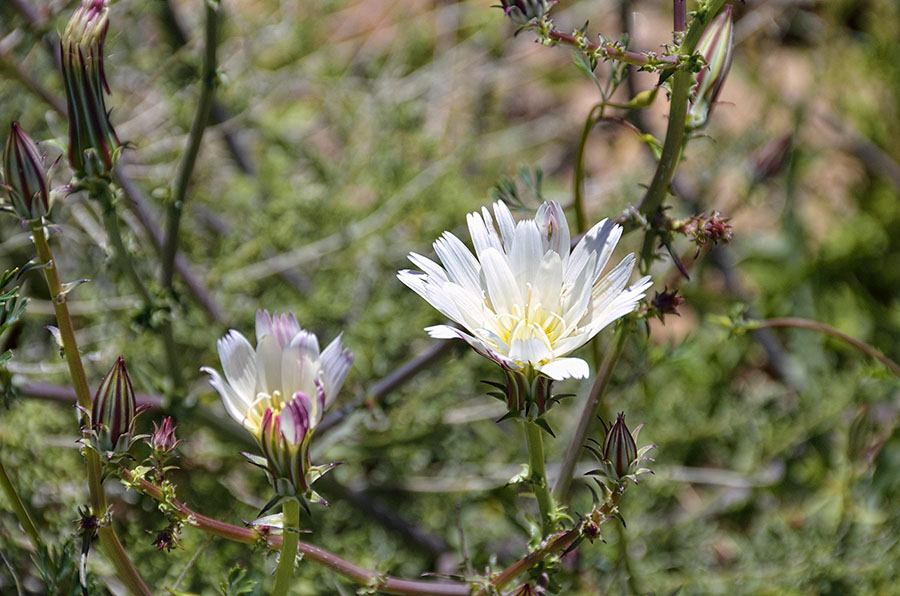
The next day we spotted a sign for a Bureau of Land Management (BLM) information office, and they suggested we check out the Turtle Mountain area on the California side. This is part of the Mojave Desert – with a little different feel than the Sonoran Desert where we spent much of the past few weeks. It was 20 miles down a back road, then another 15 or so on a dirt road (note the long strand heading to the mountains) that was a lot more comfortable in 4WD. While Jim was locking the wheel hubs …
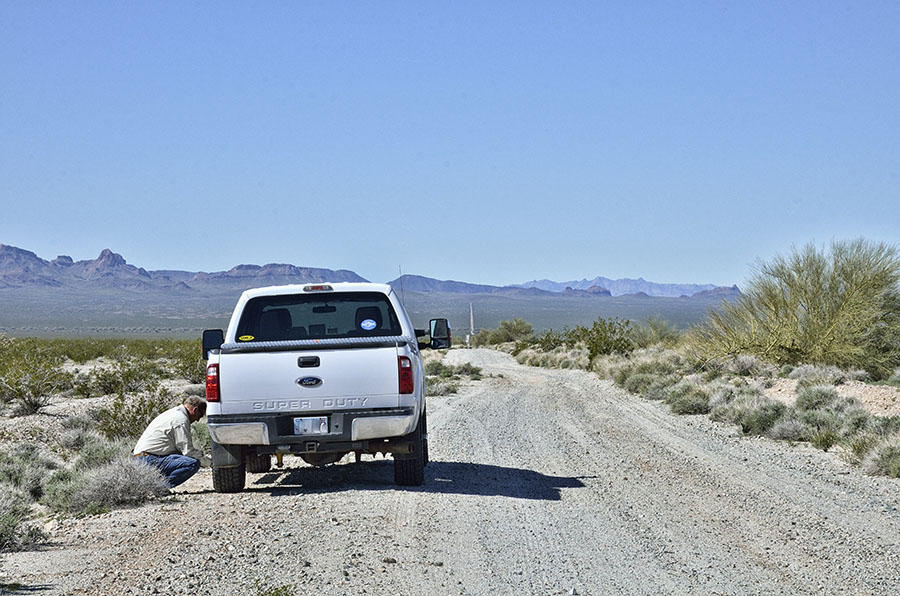
…I spotted some ocotillo that were in full leaf and flower. Remember back when we were in Organ Pipe Cactus National Monument and I talked about the ocotillo shrub/tree that adapts to dry spells by losing all its leaves? It looks like a cluster of dead sticks until there’s rain – then it will suddenly sprout little leaves all over its branches, and produce a red flower at the ends. Pretty neat.
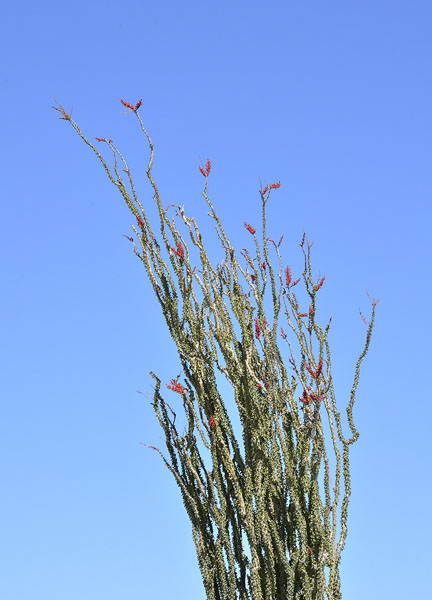
At the far end of that long dirt road we found remnants of the Lost Arch Mine, including the main shaft that was capped with a structure that allows bats and other wildlife to move in and out.
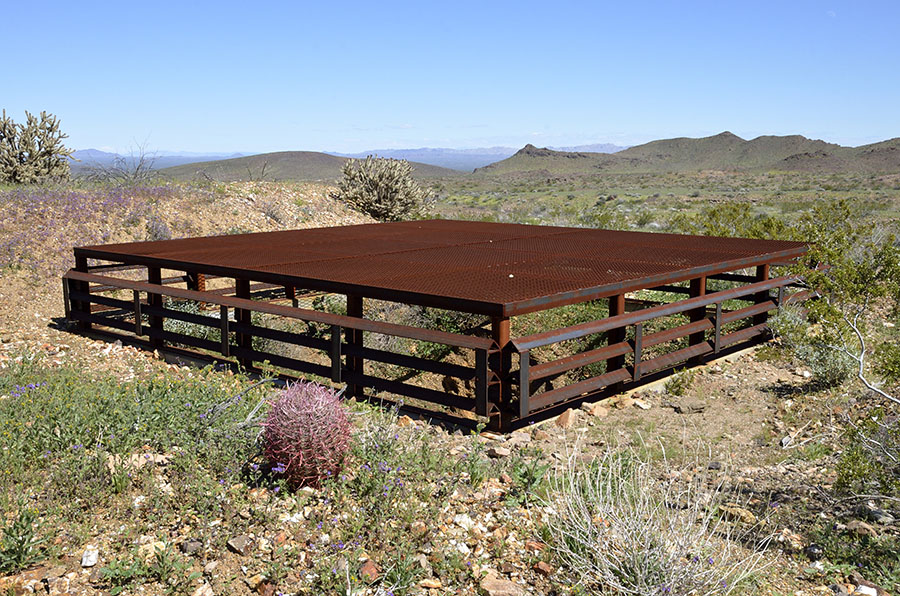
The Turtle Mountains were right in front of us, and we decided to hike the trail up and around this cluster of eroded volcanic peaks.
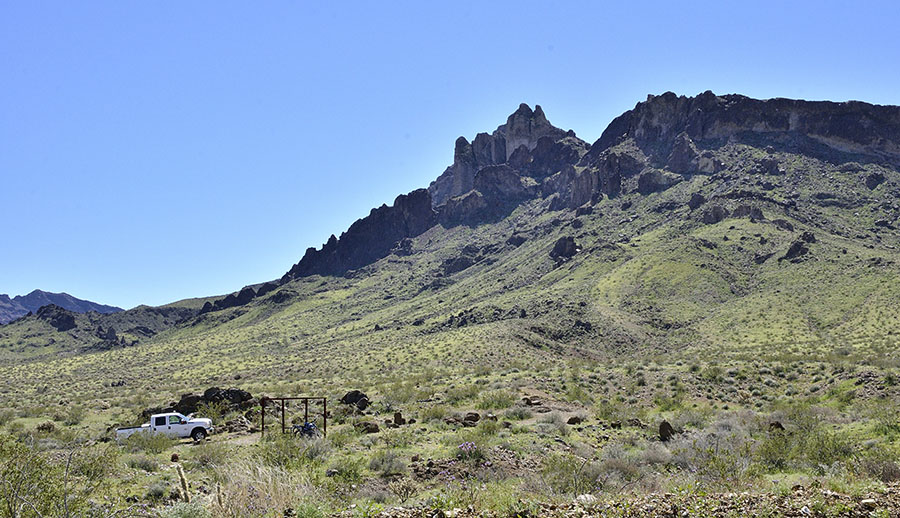
As we came up the ridge we spotted this huge depression crater to the north. I’d love to know more about its story. We learn things when we hike, but often leave with more questions than answers.
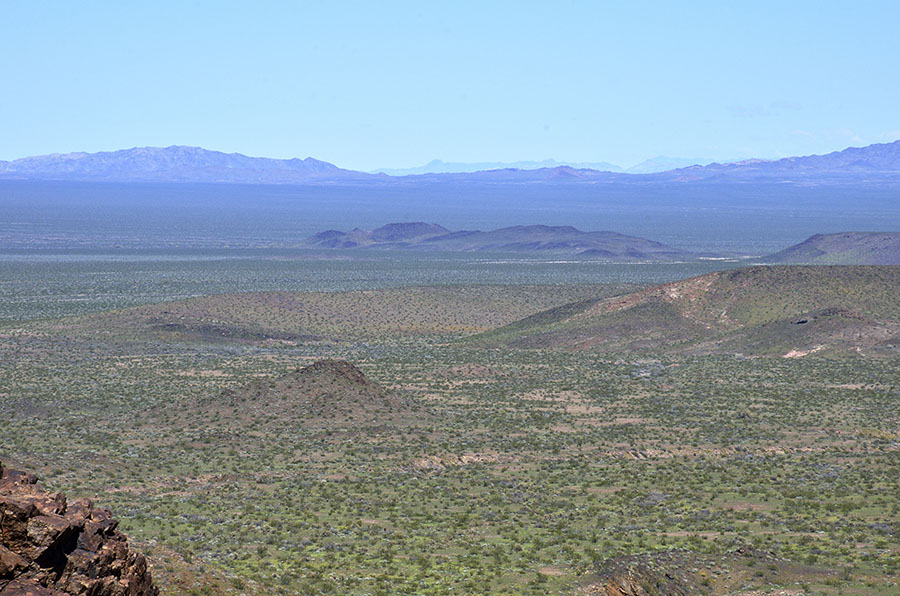
The mountain sides were covered in carpets of wildflowers, especially on the west face, and the view stretched for many miles.
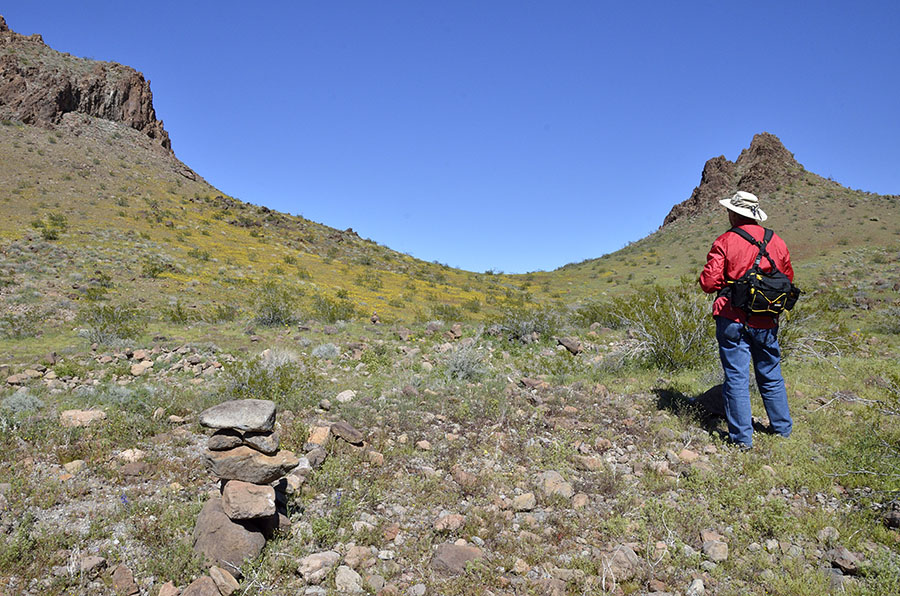
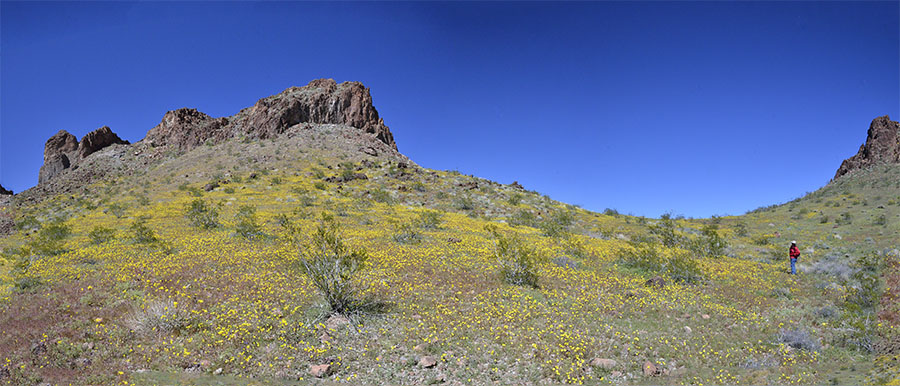
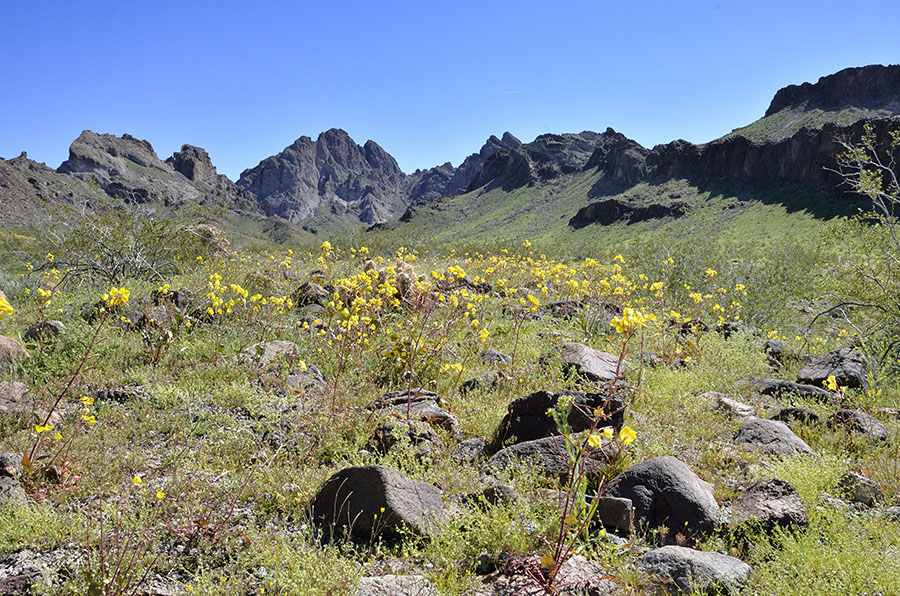
Coming around the back side of the peaks and looking back the way we came, this was the vista…
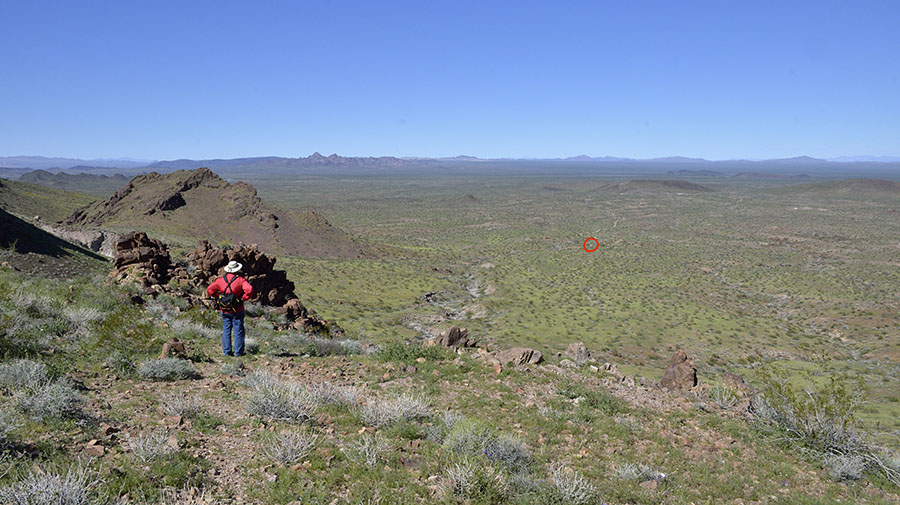
…and the little red circle is where our truck is. The trail here is not used very often – it was rather faint and we had to back-track a few times to find the easier way down.
What a fabulous set of adventures! But it was time to point the truck north and head for home. Spring is upon us, and now it’s time to get the boat ready for cruising. And more adventures.
